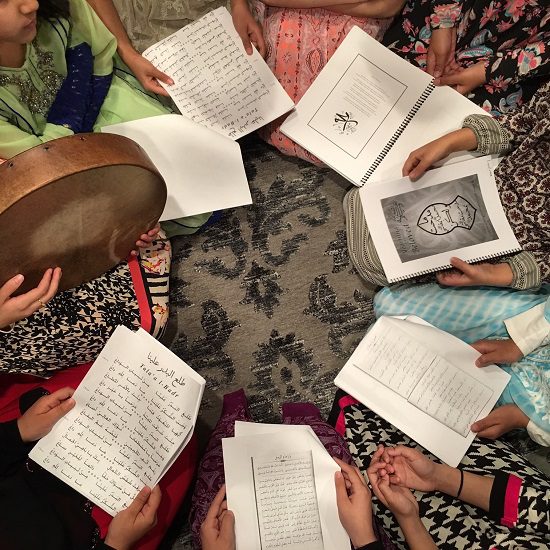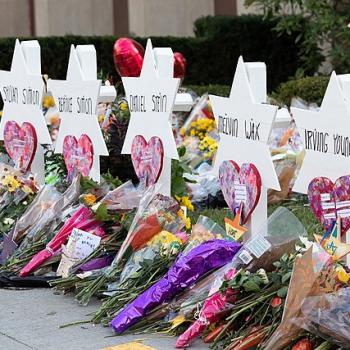 |
|
Unique enough?
|
Muslims know a thing or two about branding, after all they already own some of the world’s most well known brands. To Muslims, the brand ‘Islam’ represents a way of life; the ‘ummah’ is a transnational super-community; ‘Halal’ is a global food brand; Ramadan, Hajj, Jihad,and Zakat to name but a few are also all familiar names with their own brand values and brand experiences. All one billion Muslims – and significant chunks of the remaining global population – can identify these brands for you. That is to say, they can tell you the meaning, values and benefits of these ‘products’.
A global brand is one which consumers perceive to reflect the same set of values wherever they are in the world. Global brands transcend their geographic, cultural or ideological origins, and create strong, enduring relationships with those who consume the brands across countries and cultures. Think of walking into a McDonald’s or a KFC – you know exactly what will be on the menu, and what the food will be like.
During the expansion of the Muslim world from the 7th century onwards, the ‘Islamic’ brands spread quickly. In many ways, they created a self-sustaining economy. For example, the brand of ‘halal’ meant that Muslims were employed in creating halal products – such as meat – which would be bought by Muslims, creating employment for Muslims, and keeping finance in the Muslim pocket. Even though the immediate objective of Muslims confining themselves to the ‘halal’ brand is to follow Islamic teachings and eat healthy clean prescribed food, the retention of Muslim commerce within the Muslim market is a bonus by-product.
Let’s keep our focus for the time being on the ‘halal’ brand, to understand why I believe those engaged in creating ‘Islamic’ products today have an upside down approach to ‘Islamic branding’. The ‘halal’ brand, as taught by the Prophet is made up of two parts when it comes to food production. One part is made up of the values that make something ‘halal’, and the other part is the technicalities of the process, like how to slaughter animals.
The technical procedures are generally well documented and great emphasis is rightly placed on the observation and implementation of these procedures. The ‘halal’ brand is also made up of values such as purity, goodness, well-being, animal welfare, and honest earnings. The same partnership between technicalities and values make up the other brands I’ve quoted like ‘Islam’, ‘Hajj’, ‘Zakat’ and so on. It is the underpinning values that give each of these process their meaning and significance. So, even if you carry out hajj, zakat, salat or any of the other Islamic activities – even if it is to the letter – but fail to grasp the values that it conveys, then the ritual is empty and feels meaningless even to the protagonist. For example, the ritual of hajj is about building brotherhood, and yet in the tussle to complete the prescribed Tawaf, people will happily elbow their brothers and sisters, trample on their feet, or squash others, leaving themselves and others feeling angry, hostile and horrified. The brand value of hajj – building of brotherhood – is lost to the technicalities of completing the tawaf. When the values that underpin the ‘brand’ are contravened, the brand becomes empty and void, and instead of having long lasting results, its impact fades away.
It may seem a strange way to approach religion and religious rituals in commercial terms like ‘brand’, ‘consumer’ and ‘product’, but if Muslims are to build meaningful, sustainable and innovative brands and products, we have to understand what exactly is an ‘Islamic’ brand, and how should it be constructed in order for it to be game-changing.
Most of today’s ‘Islamic’ products are a sad reflection of the state of the contemporary Muslim world – focusing on the technicalities of Islam rather than aspiring to live the values themselves. Islamic practice and social discourse today are all about following the rules, rather than creating the ethos and then using the rules to deliver to that ethos. Don’t get me wrong – rules are crucially important, and must be observed. But rules are not the end in themselves, they are a tool to deliver a vision and a set of values.
The problem with most ‘Islamic’ products today is the same. They tick all the boxes that make them ‘technically’ Islamic. They do this by taking existing products that are not necessarily constructed on Islamic values, tweak them a bit so they ‘technically’ meet the requirements, and then badge them ‘Islamic’.
Take the spate of ‘Islamic’ colas that hit the world – we had Mecca cola, Ummah cola and Zamzam cola to name but a few. What was ‘Islamic’ about them except the name? They cashed in on a moment in political history when Muslims wanted to boycott the big brands. Instead of taking this moment when there was a captive and willing worldwide Muslim audience to deliver a truly innovative drinks range based on values inimical to Islam, the producers pocketed a short term benefit for themselves by copying another product. They gave a global market sugary teeth-rotting drinks. If they had considered the kind of values that would be great in a drink drawing from Islamic values, they may have thought of something that cleanses the body, is made from pure sustainable ingredients, and whose packaging degrades without damaging the environment. With such a brand-values-based approach to product design they might have won over not just the Muslim market, but a wider global market too – through values and innovation.
If today’s ‘Islamic’ products are to really mean anything, they must create their brands as derivatives of the main Islamic superbrands that I mentioned at the beginning. That is how they can appeal to the Muslim audience. Muslim consumers will fully understand the ethos of the products and how the products will change their lives. The products will move from being a necessity to being a valued product – which of course increases its desirability and price.
However, what is even more attractive is that the fundamental ‘Islamic’ brand values will undoubtedly appeal across the commercial and global spectrum to all consumers irrespective of faith. I’ve already spoken of ‘good’ food. The same applies to other values like environmental protection, ethics and fair trade and financial prudence and workers’ welfare. By exhibiting these brand values in ‘Islamic’ products, they will appeal to those from other backgrounds too, as they are universal aspirations.
I would urge all those engaging in creating ‘Islamic’ brands to move past just tweaking products so that they are technically Islamic, and start thinking about the Islamic values that are crucial to new products and then design products from the ground up. Copy cat products do not change the world. Innovative, game changing products come from meeting real untapped consumer needs. The way they do this is by building brands whose values are meaningful and important to consumers, and which consumers fully believe in.
A new wave of products that appeal to Muslim money should do more than just meet the technical spec. They must be built on brand values that aim to invest all the goodness of the superbrand of ‘Islam’. What is important is not the label ‘Islamic’ but that the values that are used to design the products are Islamic, and deliver an Islamic brand experience to consumers.
Shelina Zahra Janmohamed is the author of Love in a Headscarf and writes a blog at spirit21.co.uk. She has fifteen years of experience in marketing and new product creation. This article was published in the Muslim Council of Britain’s publication entitled ‘Nurturing the Future in Islamic Finance and Thought Leadership’ as part of an international delegation to the 6th World Islamic Economic Forum in Kuala Lumpur, Malaysia May 2010. The full brochure can be accessed here (pdf).











